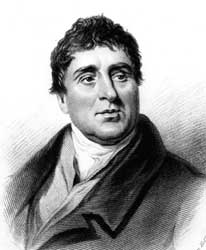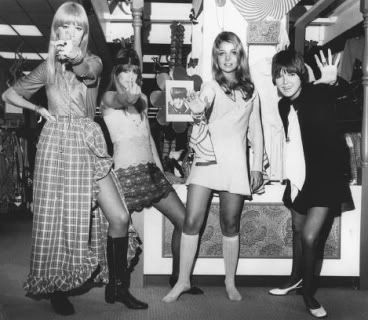
Sir Ranulph Twisleton-Wickham-Fiennes, 3rd Baronet, OBE (usually simply Ranulph Fiennes, born March 7, 1944) is a British explorer and holder of several endurance records. He was the first man to visit both the North and South Poles.
Fiennes was born in England shortly after the death of his father, Lieutenant Sir Ranulph Twisleton-Wykham-Fiennes, 2nd Baronet, who was killed in action in World War II. On his birth Fiennes automatically inherited the Baronetcy, becoming the 3rd Baronet. After the war his mother moved the family to South Africa where he remained until he was twelve. Ranulph then returned to be educated at Eton, after which he joined the British Army.
Ranulph Fiennes married his childhood sweetheart Virginia Pepper ("Ginny") in 1970; the two remained married until her death in February 2004.
He is the third cousin of Hollywood film actors Joseph and Ralph Fiennes, and is a distant cousin of Britain's royal family. Ranulph Fiennes was on the shortlist of those considered to replace Sean Connery in the role of James Bond (despite Fiennes having little acting experience). Fiennes was summarily rejected on meeting Bond producer Cubby Broccoli, who said he had "a face like a farmer's". Ranulph Fiennes owns and operates a sheep and cattle farm on Exmoor.
Soldier
Fiennes served eight years in the British army, first with his father's regiment the Royal Scots Greys and later on secondment to the Special Air Service, where he specialised in demolitions.
Offended by the construction of a concrete dam built for a film production of Doctor Dolittle at Castle Coombe, Wiltshire, Fiennes and an SAS comrade demolished the dam (using explosives Fiennes had obtained for authorised demolitions, but which by dint of efficiency he had been able to save). Both fled, and Fiennes (who had recently completed a training course on evading dogs) escaped capture - but his comrade did not, and both were subsequently discharged from the SAS and returned to their regiments.
Following his service in the British Army, Ran Fiennes served in the private army of the Sultan of Oman.
Adventurer
Since the 1960s Fiennes has been an explorer. He led expeditions up the White Nile on a hovercraft in 1969 and on Norway's Jostedalsbre Glacier in 1970. Perhaps his most famous trek was the Transglobe Expedition that he undertook from 1979 until 1982. Fiennes and Charles Burton journeyed around the world on its polar axis using surface transport only, covering 52,000 miles and becoming the first people to have visited both poles.
In 1992 Fiennes lead an expedition that discovered the lost city of Ubar in Oman. The following year he joined with nutrition specialist Mike Stroud to become the first to cross Antarctica unaided. Their journey of 97 days is the longest in south Polar history.
In 2000 he attempted to walk solo and unsupported to the north pole. The expedition failed when his sleds fell through weak ice and Fiennes was forced to pull them out by hand. He sustained severe frostbite to the tips of several fingers, forcing him to abandon the attempt. On returning home, his surgeon insisted the necrotic fingertips be retained for several months (to allow regrowth of the remaining healthy tissue) prior to amputation. Impatient at the pain the dying fingertips caused, Fiennes removed them himself (in his garden shed) with an electric saw.
Despite suffering from a heart attack and undergoing a double heart by-pass operation just four months previously, Fiennes joined up with Stroud again in 2003 to carry out the extraordinary feat of completing seven marathons in seven days on seven continents. Their route:
26th October - Race 1: Patagonia, South America
27th October - Race 2: Falkland Islands, "Antarctica"
28th October - Race 3: Sydney, Australasia
29th October - Race 4: Singapore, Asia
31st October - Race 5: London, Europe
31st October - Race 6: Cairo, Africa
1st November - Race 7: New York, North America
Originally Fiennes had planned to run the first marathon on King George Island, Antartica. The second marathon would then have taken place in Santiago, Chile. However bad weather and aeroplane engine trouble caused him to change his plans, running the South American segment in southern Patagonia first and then hopping to the Falklands as a substitute for the Antarctic leg.
Speaking after the event, Fiennes said that the Singapore marathon had been by far the most difficult because of high humidity and pollution. He also said that his cardiac surgeon had approved the marathons providing his heart-rate did not exceed a set amount; Fiennes later confessed to having forgotten to pack his heart-rate monitor.
Author
Fiennes career as an author has developed alongside that of explorer. He is the author of thirteen books in fiction and non-fiction. In 2003 he published a biography of Captain Scott which proved to be a very robust defence of Scott's achievements and reputation which had been strongly questioned by biographers such as Roland Huntford. Although others have made comparisons between Fiennes and Scott, Fiennes himself says that he identifies more with Captain Oates, another member of Scott's doomed Antarctic team.
His works include:
Ranulph Fiennes, To The Ends of the Earth (1983) ISBN 0340252774 -- account of the Transglobe Expedition.
Politician
Fiennes stood for the Countryside Party in the 2004 European elections in the South West England region — 4th on their list of 6. The Party received 30,824 votes - insufficient for any of their candidates to be elected.
Recognition
In 1970, while serving with the Omani Army, Fiennes received the Sultan's Bravery Medal. In 1983 he was awarded an honourary doctorate by Loughborough University, and later received the Royal Geographical Society's Founders Medal.
Fiennes was appointed OBE in 1993 "for Human Endeavour and for charitable services"- his expeditions have raised £5 million for good causes. In 1995 he was awarded the Polar Medal - he is the only person ever to receive a bar to this award, having visited both poles.
His title "Sir" comes from his hereditary Baronetcy - he has not been awarded a knighthood. His formal style is thus Sir Ranulph Twisleton-Wickham-Fiennes, Bt, OBE, the "Bt" after his name indicating that he is a baronet.













